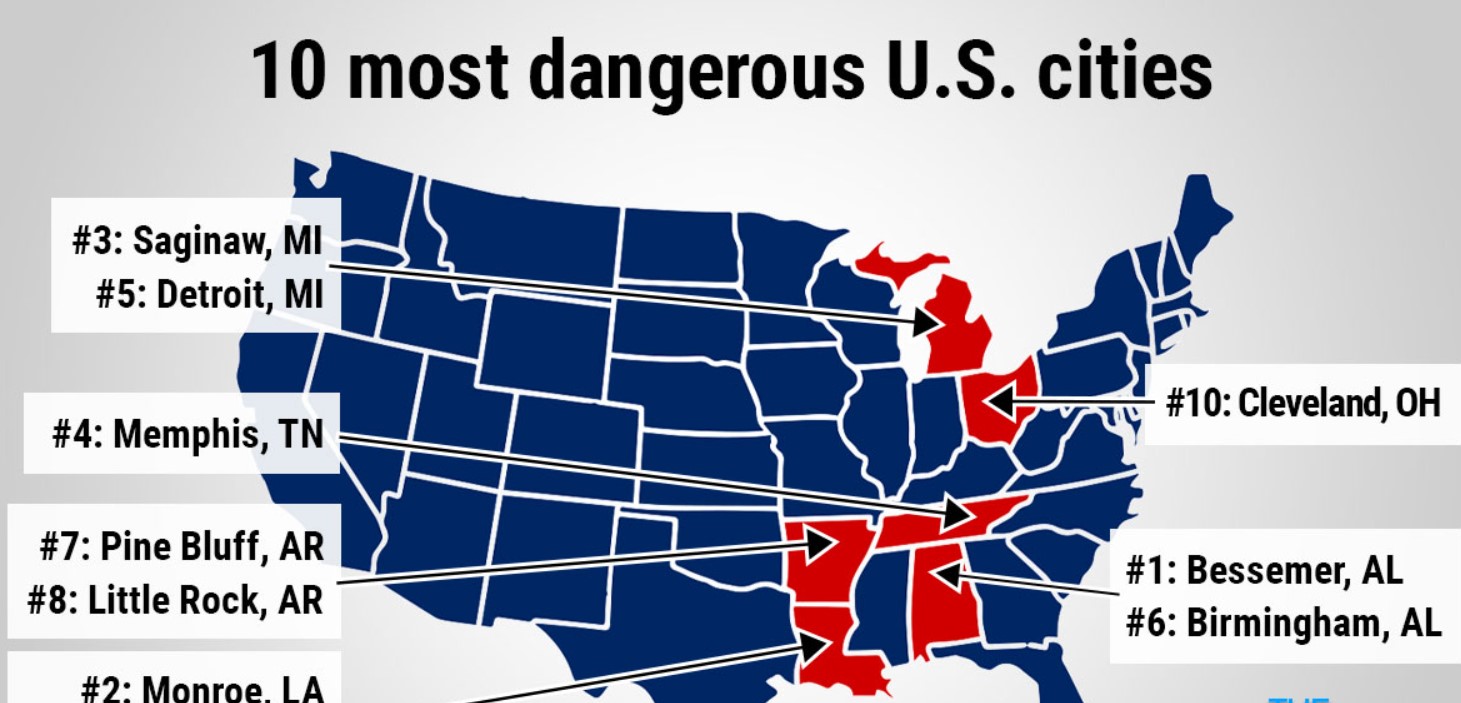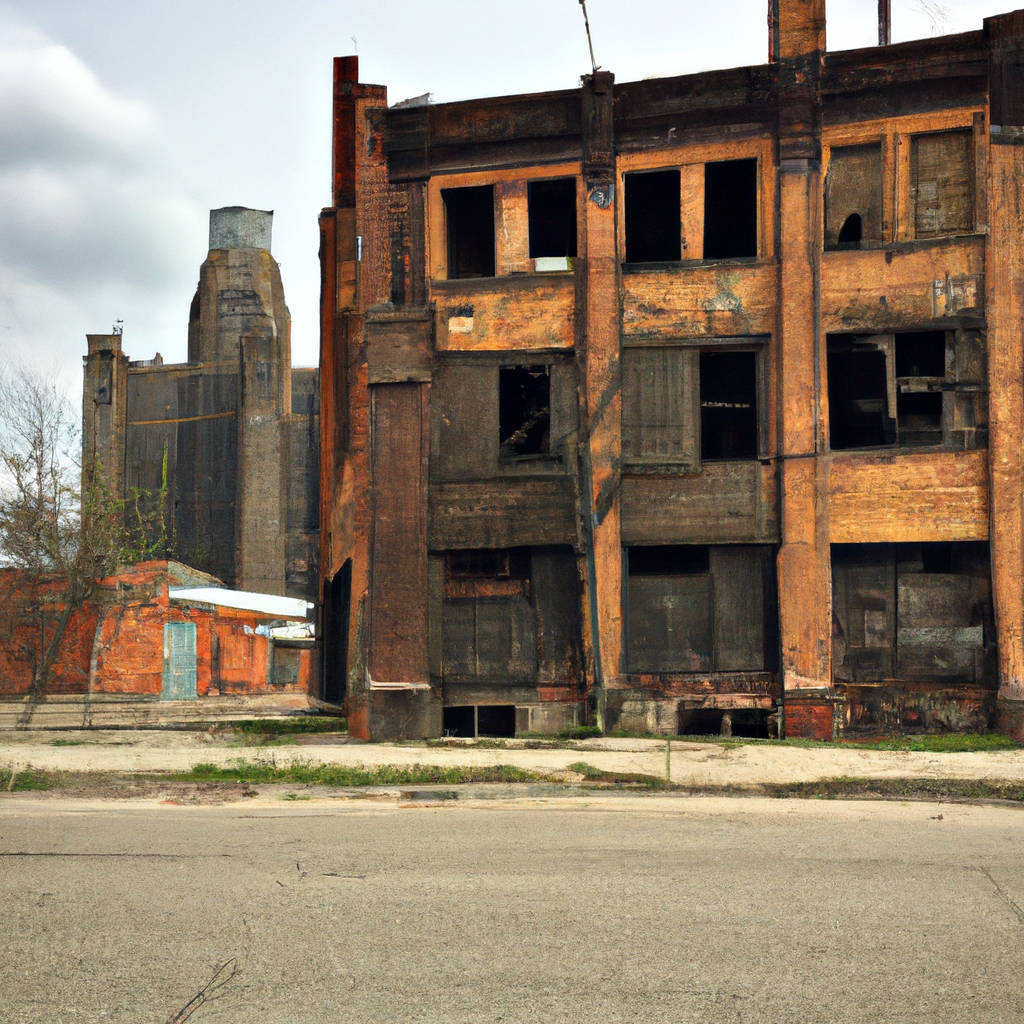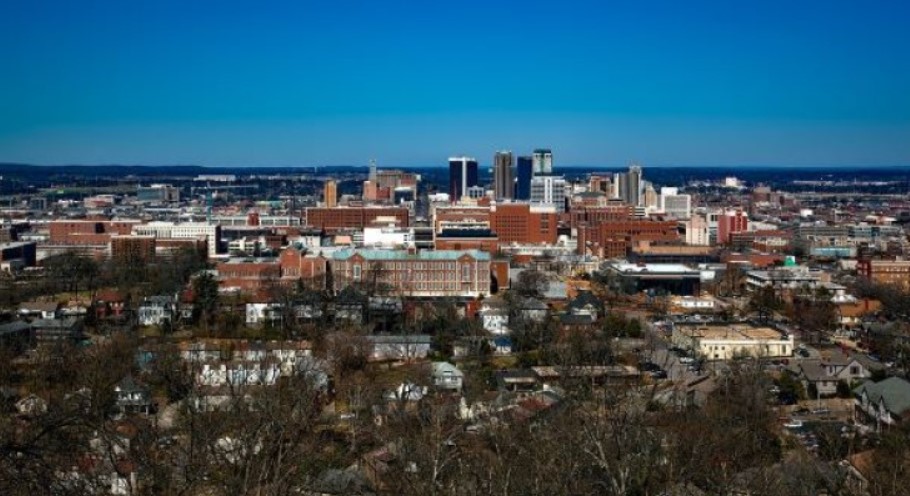America’s riskiest urban centers are those cities that have been identified as the top most dangerous cities in the country. These cities are known for their high rates of violent crime, including murder, robbery, and assault. In these urban centers, residents face significant risks to their safety and well-being on a daily basis. The factors contributing to the dangerous nature of these cities vary, but often include poverty, lack of access to quality education and healthcare, and a history of gang activity. Despite efforts to address these issues, the crime rates in these cities remain alarmingly high, making them some of the most dangerous places to live in America. It is important for residents of these urban centers to be aware of the risks they face and to take precautions to protect themselves and their families from becoming victims of crime.

Birmingham, AL: Highest Crime Rate
Birmingham, AL has been plagued by a high rate of criminal activity in recent years. The city has struggled to address the root causes of this issue, leading to a spike in violent crimes such as assault and robbery. Residents have expressed concern over the safety of their neighborhoods and the lack of effective measures taken by local authorities to combat the rising crime rate. Community members have called for increased resources and support for at-risk populations, as well as more opportunities for youth engagement and positive social outlets.
Despite efforts to crack down on criminal behavior, Birmingham continues to grapple with the challenges of poverty, unemployment, and substance abuse that contribute to the city’s reputation as one of the most dangerous places to live in the United States. In order to truly address the issue of crime in Birmingham, a holistic approach that focuses on prevention, intervention, and rehabilitation is needed to create a safer and more secure environment for all residents.
Detroit, MI: Urban Decay Impact
Detroit, MI has long been known for its urban decay, with abandoned buildings and crumbling infrastructure serving as stark reminders of the city’s economic struggles. The impact of this decay is evident in the vast stretches of vacant lots and dilapidated homes that dot the landscape, creating a sense of desolation and hopelessness in many neighborhoods. The lack of investment and upkeep in these areas has led to a cycle of decline, with residents feeling trapped in a cycle of poverty and neglect.
The decaying buildings and infrastructure also pose serious safety hazards, with fires, collapses, and other dangers threatening the well-being of those who still call these areas home. The urban decay in Detroit has also had a ripple effect on the city as a whole, contributing to a negative reputation that can be difficult to shake.
Despite these challenges, there are signs of hope and revitalization in some parts of the city, with community organizations and local government working to address the root causes of decay and create a more sustainable future for all residents. However, the legacy of urban decay in Detroit will likely continue to shape the city for years to come, underscoring the importance of addressing the root causes of economic decline and investing in the well-being of all residents.

Memphis, TN: Growing Crime Risks
Memphis, TN is facing increasing challenges when it comes to crime risks. The city has seen a rise in criminal activity in recent years, with reports indicating that incidents of violence and theft are on the rise. This trend has raised concerns among residents and law enforcement officials alike, as they grapple with finding effective ways to address the problem.
The growing crime risks have had a significant impact on the community, leading to feelings of fear and insecurity among those who call Memphis home. Additionally, the rise in criminal activity has also put a strain on local businesses and the economy, as customers and investors become wary of the city’s reputation for crime. Despite efforts to combat the issue, such as increased police presence and community outreach programs, the challenges persist.
It is clear that addressing the root causes of crime in Memphis will require a multifaceted approach that addresses underlying social and economic factors contributing to the problem. Only through a coordinated effort involving all members of the community can Memphis hope to overcome the growing crime risks and create a safer, more secure environment for all its residents.
New Orleans, LA: Notorious Crime Hub
New Orleans, LA has a reputation as a city with a high rate of criminal activity. The city is known for its vibrant culture, music, and food, but it also has a dark side. From gang violence to drug trafficking, New Orleans has long been associated with criminal behavior. The city’s history of corruption and organized crime has contributed to its reputation as a dangerous place to live.
Despite efforts to improve safety and reduce crime rates, many residents still feel unsafe in their own neighborhoods. The city’s police force has faced criticism for its handling of crime and its ability to effectively combat criminal activity. Some argue that the city’s economic struggles and high poverty rates contribute to the prevalence of crime in New Orleans. While the city has made progress in recent years in reducing crime rates, it still has a long way to go in order to shed its reputation as a notorious crime hub. Residents and community leaders continue to work together to address the root causes of crime and create a safer environment for all who call New Orleans home.

St. Louis, MO: High Crime Incidence
St. Louis, MO has unfortunately gained a reputation for its high crime incidence in recent years. The city has been plagued by a significant amount of criminal activity, ranging from theft and vandalism to more serious offenses such as assault and homicide. This has had a negative impact on the community, instilling fear and unease among residents. The prevalence of crime in St. Louis has also had economic repercussions, as businesses and investors may be deterred from operating in the area.
Additionally, the high crime rates have put a strain on law enforcement and resources, making it difficult for authorities to effectively combat the issue. Despite efforts to address the problem, such as community policing initiatives and increased surveillance, crime continues to be a pressing issue in St. Louis. It is crucial for the city to come together and work towards finding solutions to reduce crime and create a safer environment for all residents.
Addressing Urgent Need for Comprehensive Solutions
In today’s society, it is becoming increasingly apparent that urgent action is needed to address the complex challenges facing our world. From climate change to poverty to healthcare access, the need for comprehensive solutions has never been more pressing. It is clear that piecemeal approaches are no longer sufficient to address the interconnected issues we face. Instead, a holistic and integrated approach is necessary to create lasting change and improve the well-being of all individuals.
This requires collaboration across sectors, disciplines, and ideologies to develop innovative solutions that address the root causes of these problems. By taking a comprehensive approach, we can better understand the underlying factors contributing to these challenges and develop sustainable solutions that have a lasting impact. It is essential that we prioritize the well-being of all individuals and work towards building a more equitable and just society. Only through a comprehensive approach can we create a better future for all.
